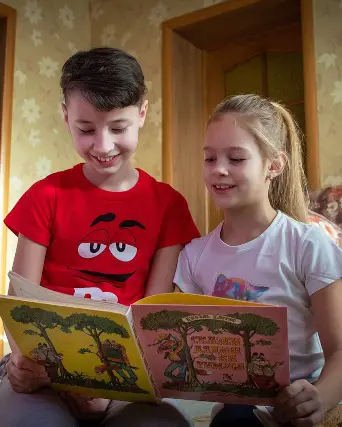Discover how picture books, storybooks, non-fiction books, poetry books, and interactive books can enhance children’s lives, and problem-solving abilities.
Nurture a love for reading and support holistic development in children through diverse literary genres.
When it comes to children’s learning styles, the types of books they read play a crucial role in shaping their development. Here are some common types of books and the benefits they offer in enhancing children’s learning styles:
1. Picture Books
Benefits:
- Visual Learning: Picture books help children develop visual literacy skills by engaging them in interpreting images.
- Story Comprehension: The illustrations in picture books aid in understanding the storyline and context of the narrative.
- Creativity: Visual stimuli in picture books inspire creativity and imagination in children.
2. Storybooks
Benefits:
- Language Development: Storybooks expose children to a wide range of vocabulary and language structures, enhancing their language skills.
- Critical Thinking: Reading stories encourages children to think critically, analyze situations, and predict outcomes.
- Empathy: Characters and situations in storybooks promote empathy and emotional intelligence in children.
3. Non-Fiction Books
Benefits:
- Knowledge Acquisition: Non-fiction books provide factual information, expanding children’s knowledge base on various topics.
- Research Skills: Reading non-fiction books helps children develop research skills, including finding and evaluating information.
- Curiosity: Non-fiction books spark curiosity in children, encouraging them to explore the world around them.
4. Poetry Books
Benefits:
- Language Play: Poetry books introduce children to the rhythmic and expressive nature of language, enhancing their language play.
- Emotional Expression: Poems help children express emotions through words and connect with their feelings.
- Memory Skills: Memorizing poems improves memory retention and recall abilities in children.
5. Interactive Books
Benefits:
- Engagement: Interactive books engage children actively through touch, sound, or movement, making learning more interactive and fun.
- Motor Skills: Activities in interactive books promote the development of fine motor skills in children.
- Problem-Solving: Interactive elements in books encourage problem-solving skills and cognitive development.

Incorporating a variety of book types in children’s reading materials can cater to different learning styles and preferences. Whether it’s fostering creativity through picture books, enhancing language skills with storybooks, expanding knowledge with non-fiction books, exploring emotions through poetry, or engaging actively with interactive books, each type offers unique benefits that contribute to a holistic learning experience for children.
By exposing children to diverse literary genres, we can nurture their love for reading and support their overall cognitive, emotional, and social development.
Reading books that stir the imagination is a catalyst for the desire to write and share their own stories. Be sure to visit our Kids Gallery to view books that have been written by children and sent to us. Some are even narrated by the child.
What were your favorite children's books growing up?
There were three books that I read as a child that make me smile to this day. The first was about a boy visiting his relatives who lived in the desert. He sees a mountain move … and realizes it’s a stegosaurus. The next story is two orphans who called themselves snahpro (orphans backwards, but I didn’t realize that until the end of the book) who are ocean bound in a dingy. And the third was about a little boy who builds a rocket in his backyard and goes to the moon. Friends watch him through a telescope as he encounters stinging “seaweed” like plants. I loved these books because they stirred my imagination.
Do you know the titles of these books? What books do you remember?

